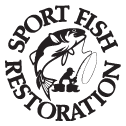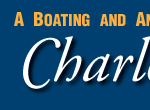CONTACT US:
Florida Fish and Wildlife
Conservation Commission
Fish and Wildlife
Research Institute
100 Eighth Avenue SE
St. Petersburg, Florida 33701
727-896-8626
|
|
|
Charlotte County
UF/IFAS Extension
Florida Sea Grant
25550 Harbor View Rd #3
Port Charlotte, Florida 33980
941-764-4340
|
|
|

|
|
Funding for this project was obtained through grants from the West Coast Inland Navigation District and Charlotte County.
|

|
|
Additional funding for this project was obtained through the Federal Aid in Sport Fish Restoration Fund.
|
|
|
 |
Below is a list of paddling trails in the Charlotte Harbor area. This list contains trails that are promoted by local, county, and state agencies. There are many more areas within Charlotte Harbor that offer paddling opportunities.
Before heading out on any paddling adventure, please follow these safety tips:
- 1. WEAR A PERSONAL FLOTATION DEVICE (PFD)! Florida law requires a readily accessible Coast Guard approved PFD for each occupant. Children younger than six years-old are required to wear a PFD.
- 2. FILE A FLOAT PLAN AND LEAVE IT WITH A RELIABLE PERSON. A float plan contains information about your trip in the event that you do not return as scheduled. This includes a description of the vessel(s), names of all paddlers, planned course and stops, and an estimated time of return. Ask the person to notify the Coast Guard or local authorities if you do not return as scheduled. Don't forget to get in touch with your contact person and let them know when you return
- 3. Know the waterway conditions and be aware of water levels and currents. Tides and winds can significantly affect the difficulty of a trip. Under normal conditions, allow a minimum of two miles per hour paddling time.
- 4. Bring plenty of food and water. Drinks should be in non-breakable containers . Food and gear should be stored in watertight containers. For day trips, 1/2 gallon of water per person in recommended. For overnight trips, one gallon of water per person each day is recommended.
- 5. Bring sunscreen and insect repellent. Wear sunglasses, a hat, and long sleeves and pants even on cloudy days. Long sleeves and pants also helps prevent insect bites.
- 6. Watch for motorboats. Stay on the right and turn into the boat's wake. Respect anglers by giving them plenty of room.
- 7. Bring a cell phone or VHF radio. Cell phones are great for staying in communication, but coverage may be sporadic depending on your specific location.
- 8. Respect wildlife. Do not approach or harass wildlife, as they can be dangerous. It is also illegal to feed them.
|
REGIONAL TRAILS
|
Florida Circumnavigational Saltwater Paddling Trail
The Florida Circumnavigational Saltwater Paddling Trail is divided into 26 segments. Each segment is unique, ranging from the remote Big Bend Coast and Everglades and Florida Bay wilderness, to the more urbanized coastlines of Pinellas County and Fort Lauderdale. Three segments of the Florida Circumnavigational Trail follow the coastline of Lemon Bay, Charlotte Harbor and Pine Island Sound. Segment Ten runs from the New Pass in Sarasota through Little Sarasota and Lemon bays to Stump Pass and Don Pedro Island state Parks, Segment Eleven runs from Stump Pass Beach State Park through Lemon Bay, Gasparilla Sound, and Boca Grande Pass to Cayo Costa State Park, and Segment Twelve starts at Cayo Costa State Park and runs to Sanibel Island via Pine Island Sound and Matlacha Pass, ending at Lover's Key State Park at Estero Bay.
Visit the Florida Circumnavigational Trail Web site for more information.
Segment 10 Sarasota/Venice
Segment 11 Charlotte Harbor
Segment 12 Pine Island/Estero Bay
|
Charlotte County Blueway Trails
Charlotte County has developed a series of connected paddling trails throughout its waterways. Many of the trails connect to other paddling trails, such as the Florida Circumnavigational Trail. Trails of various experience levels have been created for most of Charlotte County's coast waters.
Charlotte County has developed a Blueway Trails guide, highlighting the local history, trailhead access points, habitat informtion, and information for about 50+ trails that are part of the Blueway Trails system.
For more information about Charlotte County Blueway Trails, visit the Charlotte County Community Services' Charlotte County Blueway Trails Web site.
|
Great Calusa Blueway
The Great Calusa Blueway Paddling Trail is a 190-mile marked canoe and kayak trail that meanders through the coastal waters and inland tributaries of Lee County, Florida. The trail has sections for the beginner and experienced paddler. The trail is broken into three segments: Pine Island Sound/Matlacha Pass, Caloosahatchee Rive and tributaries, and Estero Bay. Maps of each trail segment can be found on the Great Calusa Blueway Trail maps page.
|
If you have any questions, comments, or suggestions about this Web site, please e-mail us at Boating_Guides@MyFWC.com.
Would you like to receive notices of changes to this Web site and the Boating and Angling Guide to Charlotte Harbor? If so, please e-mail us and include SUBSCRIBE-CHARLOTTE in the subject line.
|






















